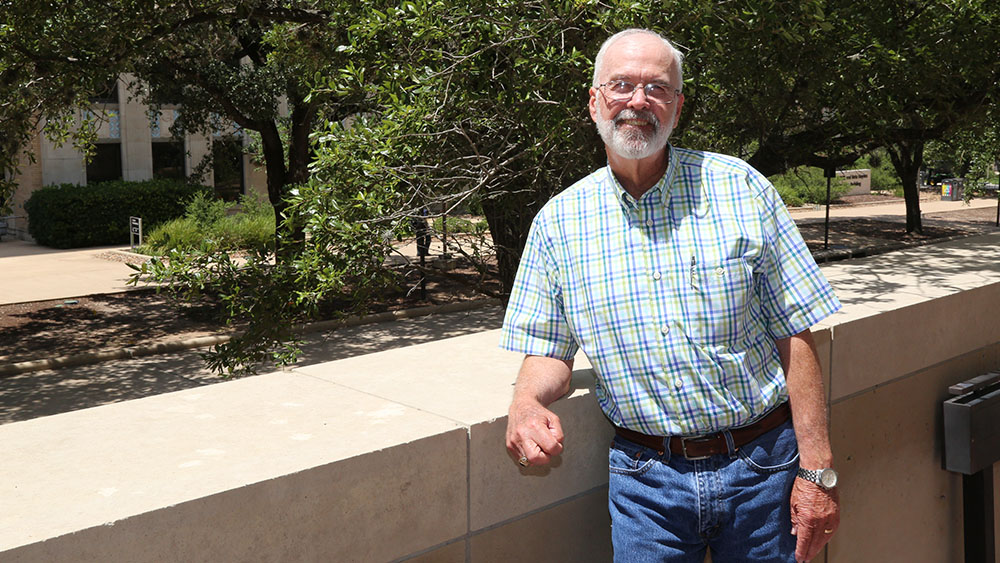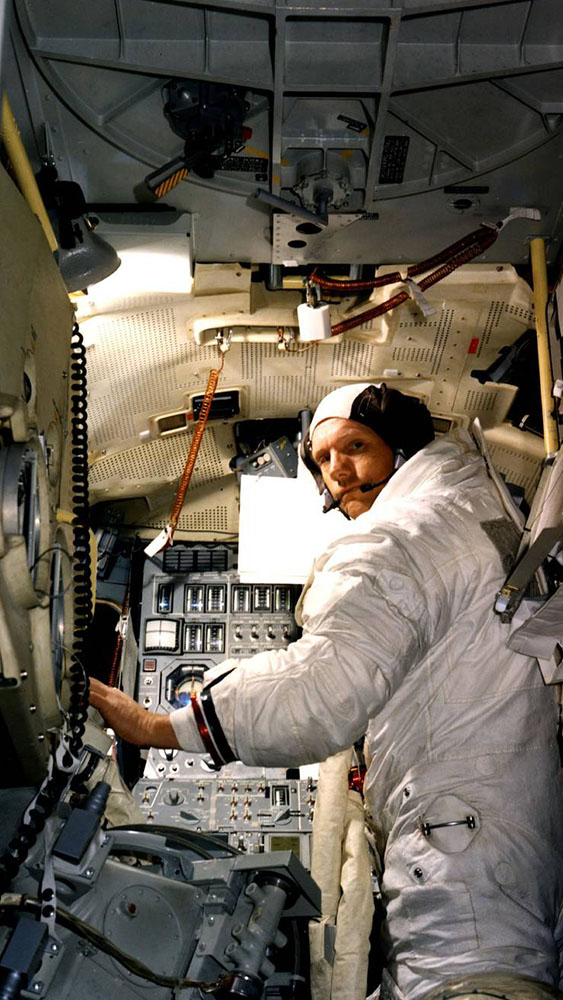
A 25-year-old fresh out of graduate school, Fred Fisher had a tall order to fill for his entry-level job: maintain operations of the lunar lander simulator for the Apollo program. Housed one floor below the astronauts’ offices at NASA’s Johnson Space Center, Fisher and four others operated and modified the simulator the astronauts would use to practice landing on the surface of the moon for Apollo 11.
There were five fixed-based simulators for the lunar lander and the command module, three at Cape Canaveral and two at Johnson Space Center. The astronauts would spend countless hours training in a room designed to mimic the inside of the lunar lander. Included on the ceiling was a disc that simulated the lunar surface, and there was a camera on a track in the room that could move up and down and rotate. If the astronauts moved the stick forward, the camera moved and three mini-computers would calculate exactly what would happen in the spacecraft.
Fisher’s team would make modifications in the wee hours of the morning, based on astronaut feedback, so the astronauts could train during the day. “Buzz Aldrin would come in and practice manually docking,” said Fisher, currently a program specialist with the Aerospace Vehicle Systems Institute at Texas A&M University. “He would get his position and velocity in the lunar lander, get the command module’s position and velocity, and do a mental calculation as to the direction and length of time of burn for the descent stage rocket to get back to the Apollo.”

A few months prior to launch, NASA engineers discovered that one of the reaction control jets in the lunar lander impinged on the spacecraft and might burn a hole in the descent stage. Fisher’s team accompanied Aldrin, Neil Armstrong and Pete Conrad at Cape Canaveral to monitor the simulated jet burn while the astronauts flew a series of landing scenarios. These tests resulted in the addition of scoops to deflect gas from the downward pointing jets and modifications to the autopilot to implement a nonlinear control stick.
Work was exciting, according to Fisher. “There was a great comradery and sense of purpose,” he said. “We were young, probably 80% of the people were under 30. We were motivated, we had a big mandate from the late President John F. Kennedy and were committed to fulfilling it.”
On July 20, 1969, Fisher, like many others, listened in on the radio as the lunar lander touched down on the surface of the moon. “They broadcasted the telemetry, the radio signals coming back from the landing, so I knew exactly what they were doing on the way down,” said Fisher. Because of his role, he was more elated with the initial landing than with Armstrong’s first steps on the moon.
Fisher, who provided support for the Apollo program from mission 8 through 13, admitted some disappointment with the fact that nothing really ever came of the lunar exploration. With talks of returning to the moon in 2024, he hopes to see a global approach. “If we return, our technology will allow us to have much more extensive exploration goals,” he said.